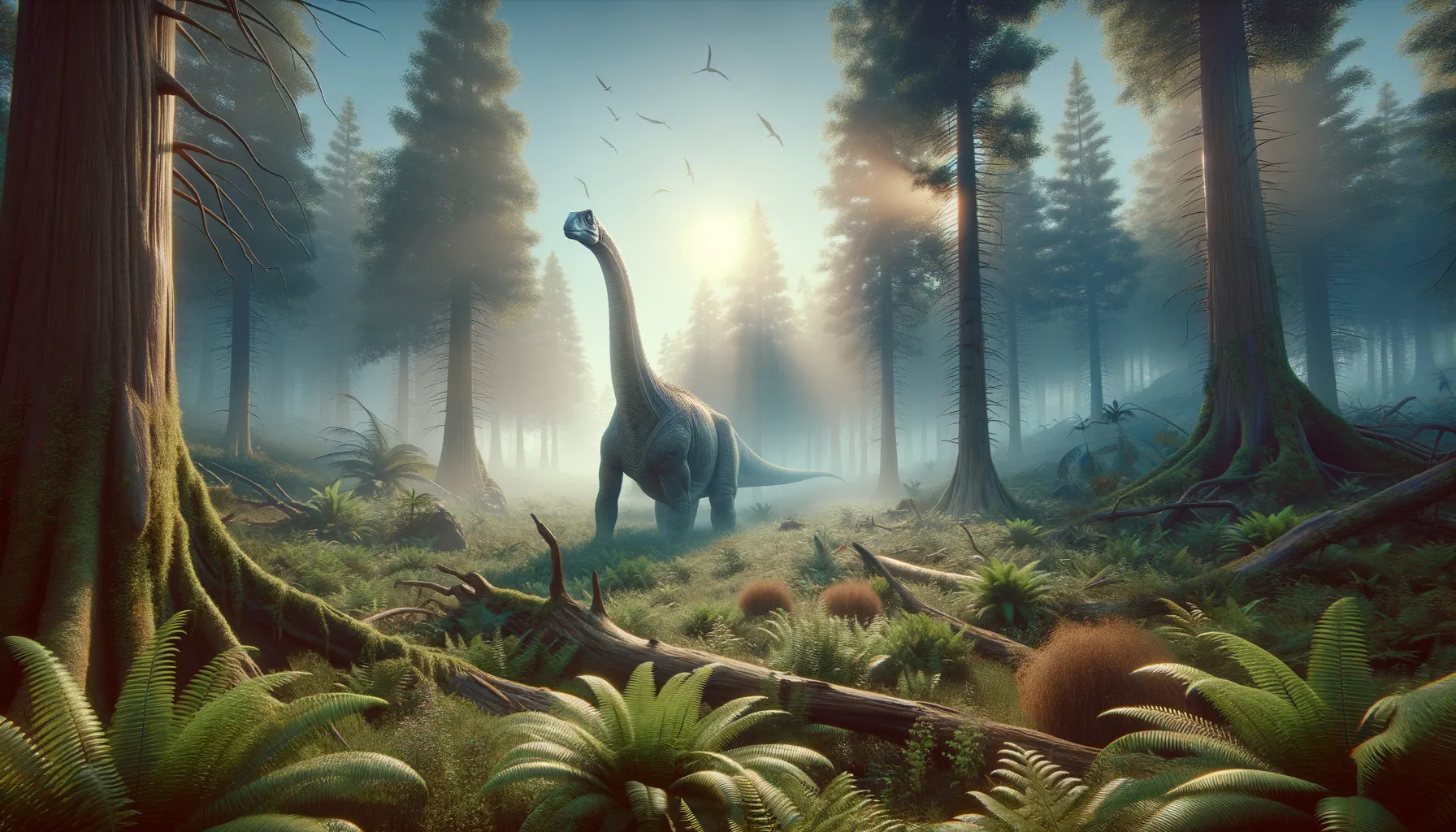
Astrodon
Marvel of the Cretaceous giant wanderers!
Period
Cretaceous
Length
Approximately 15 to 18 meters long.
Height
Could reach up to 9 meters at the shoulder.
Weight
Estimated to weigh up to 20 tons.
Astrodon was a massive herbivorous dinosaur that roamed North America during the Early Cretaceous period. Known for its impressive size, it is recognized for its role in the ecosystem as a large plant-eater. The fossils provide insights into its physical characteristics and how it might have interacted with its environment. Evidence suggests that it was part of a group of sauropods, characterized by long necks and tails.
Diet
Astrodon was herbivorous, feeding on a variety of plant materials. Its diet likely consisted of conifers, cycads, and other vegetation available during the Cretaceous period.
Hunting
As a herbivore, Astrodon did not engage in hunting behavior. Instead, it used its long neck to reach high vegetation, aiding its survival.
Environmental challenges
Astrodon faced environmental challenges such as seasonal changes that affected food availability. Predators, diseases, and competition for resources were potential threats. It may have needed to travel long distances in search of abundant food sources.
Speed
Estimated to be slow-moving due to its large size.
Lifespan
Potentially lived several decades, similar to other large dinosaurs.
First discovery
Discovered in Maryland, USA, in the mid-19th century.
Fun Facts
- Astrodon was one of the first dinosaurs to be discovered in North America, with its teeth discovered in Maryland in the mid-19th century.
- The name 'Astrodon' means 'star tooth,' inspired by the star-shaped cross section of its teeth.
- Astrodon was a sauropod, which means it was one of the long-necked dinosaurs that were among the largest creatures to walk the Earth.
- This dinosaur lived during the Early Cretaceous period, around 110 million years ago.
- Astrodon is the state dinosaur of Maryland, highlighting its significance in the state's natural history.
- It's estimated that Astrodon could grow up to 50 to 60 feet long, making it a giant among dinosaurs.
- Despite its massive size, Astrodon was a herbivore, feeding on plants with its peg-like teeth.
Growth and Development
Astrodon grew rapidly during the early stages of its life, a common trait among sauropods. Its development included a significant increase in size to protect itself from predators. The large size of adults likely reduced vulnerability to most predators in its ecosystem.
Habitat
Astrodon lived in what is now North America, which was a warm, lush environment during the Early Cretaceous. Its habitat included forests with diverse plant life supportive of a large herbivore. Water sources would have been crucial, both for drinking and for supporting the vegetation it relied on.
Interaction with other species
Astrodon likely encountered various other species, both herbivores and carnivores. It may have traveled in herds for protection and finding food. Carnivorous dinosaurs posed a threat, but its large size likely deterred many predators.
Natural lifespan
Astrodon might have lived naturally up to 70 years.
Reproduction
Astrodon reproduced by laying eggs, like most dinosaurs of its kind. Nesting sites likely provided a safe environment for eggs, possibly communal for protection. Young Astrodons would grow rapidly after hatching to increase survival chances.
Social behaviour
Astrodon may have displayed social behavior by forming herds, which offered protection against predators. Traveling in groups could also aid in locating food sources more efficiently. Social interactions might have included communication through vocalizations and physical gestures.
Fossil locations
Astrodon fossils have primarily been found in Maryland, USA. These discoveries have helped build a picture of life in North America during the Early Cretaceous. Ongoing excavations continue to provide information about the habitats and distribution of Astrodon.
